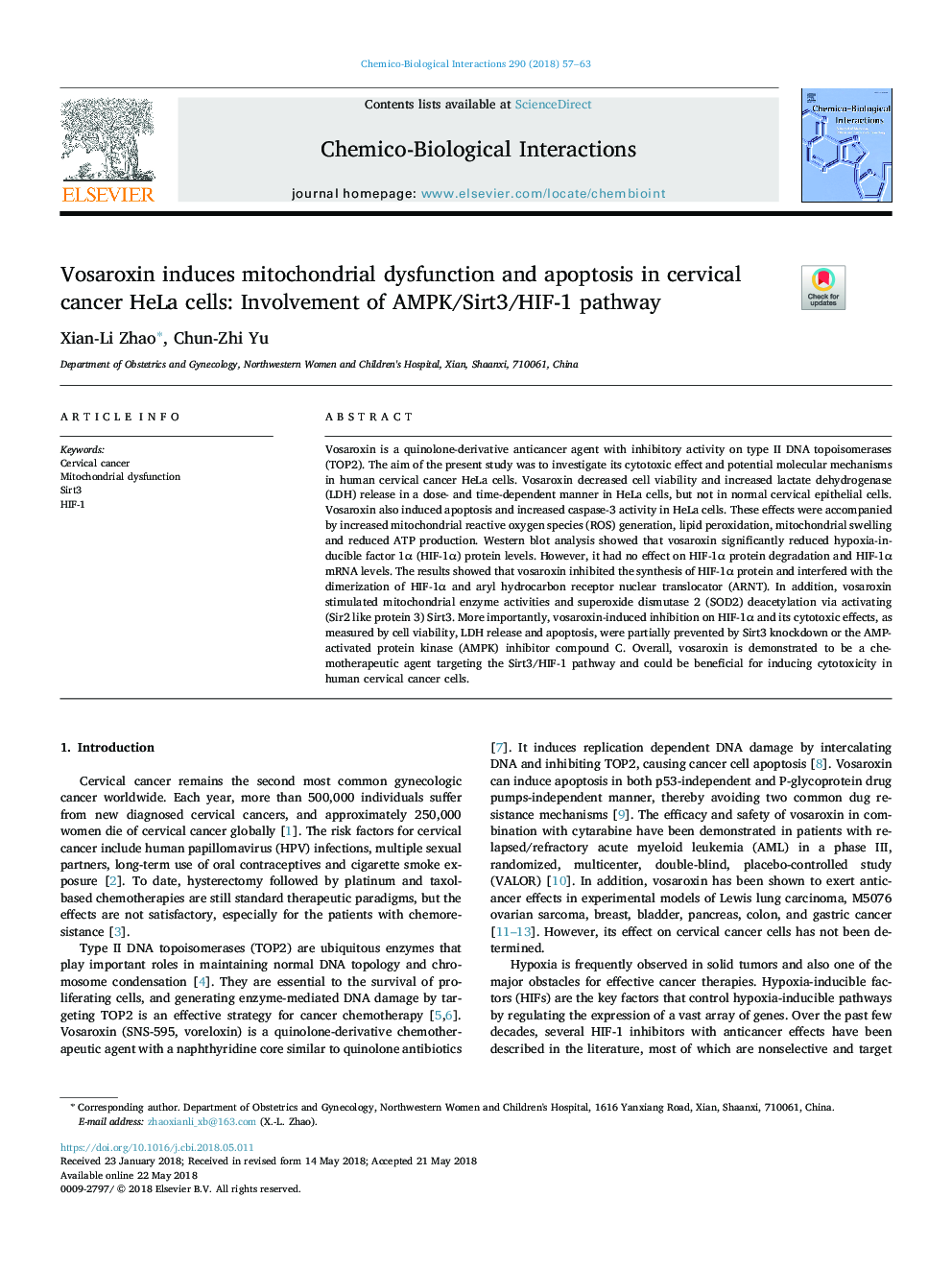| Article ID | Journal | Published Year | Pages | File Type |
|---|---|---|---|---|
| 8544671 | Chemico-Biological Interactions | 2018 | 7 Pages |
Abstract
Vosaroxin is a quinolone-derivative anticancer agent with inhibitory activity on type II DNA topoisomerases (TOP2). The aim of the present study was to investigate its cytotoxic effect and potential molecular mechanisms in human cervical cancer HeLa cells. Vosaroxin decreased cell viability and increased lactate dehydrogenase (LDH) release in a dose- and time-dependent manner in HeLa cells, but not in normal cervical epithelial cells. Vosaroxin also induced apoptosis and increased caspase-3 activity in HeLa cells. These effects were accompanied by increased mitochondrial reactive oxygen species (ROS) generation, lipid peroxidation, mitochondrial swelling and reduced ATP production. Western blot analysis showed that vosaroxin significantly reduced hypoxia-inducible factor 1α (HIF-1α) protein levels. However, it had no effect on HIF-1α protein degradation and HIF-1α mRNA levels. The results showed that vosaroxin inhibited the synthesis of HIF-1α protein and interfered with the dimerization of HIF-1α and aryl hydrocarbon receptor nuclear translocator (ARNT). In addition, vosaroxin stimulated mitochondrial enzyme activities and superoxide dismutase 2 (SOD2) deacetylation via activating (Sir2 like protein 3) Sirt3. More importantly, vosaroxin-induced inhibition on HIF-1α and its cytotoxic effects, as measured by cell viability, LDH release and apoptosis, were partially prevented by Sirt3 knockdown or the AMP-activated protein kinase (AMPK) inhibitor compound C. Overall, vosaroxin is demonstrated to be a chemotherapeutic agent targeting the Sirt3/HIF-1 pathway and could be beneficial for inducing cytotoxicity in human cervical cancer cells.
Related Topics
Life Sciences
Environmental Science
Health, Toxicology and Mutagenesis
Authors
Xian-Li Zhao, Chun-Zhi Yu,
